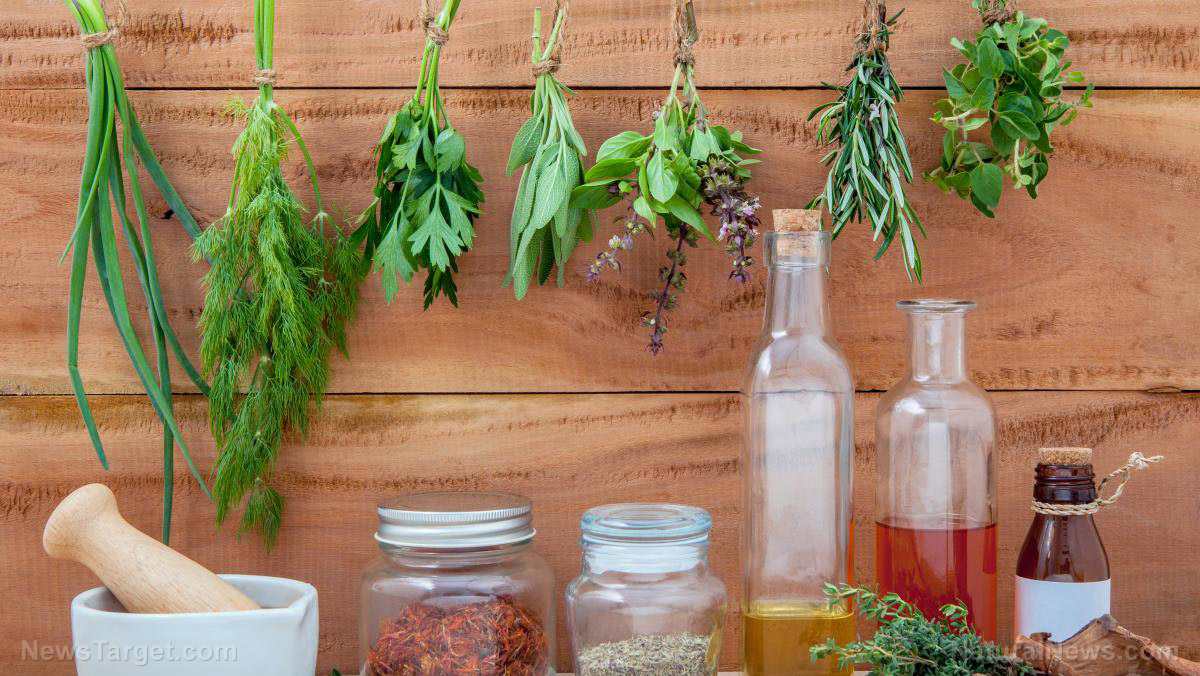Survival medicine: How to grow and use sunflowers as food and medicine
08/26/2021 / By Divina Ramirez

The sunflower is a tall, annual plant known for its large brown flower head and small golden petals. Sunflowers are often cultivated for their edible seeds, which can be eaten on their own or processed to make oil for cooking and skincare. The petals, leaves and stems of the sunflower plant are also edible and used to treat various ailments, including fever, sores and snake and spider bites.
Read on to learn how to grow and use this versatile medicinal plant. (h/t to PrepSchoolDaily.Blogspot.com)
The medicinal uses of sunflowers
The sunflower plant has a long history of use as a natural medicine among Native Americans. In fact, it was one of the first few crops they cultivated.
Unfortunately, there is little information on the preparation of sunflower petals and roots. In general, tinctures were often made using the plant’s leaves and seeds for the treatment of various ailments and conditions. The seeds, in particular, can be used as a diuretic to help rid your body of excess salt (sodium) and water. They help thin out mucus as well so that it’s easier to cough up. (Related: 13 Natural diuretic drinks that are great for detoxing.)
Anecdotal evidence indicates that sunflower leaves, roots, stems and seeds are effective against the following:
- Fungal and bacterial infections
- Communicable diseases (e.g., malaria)
- Musculoskeletal diseases (e.g., gout, rheumatoid arthritis)
- Respiratory diseases (e.g., asthma, whooping cough, tuberculosis)
- Skin inflammation
- Fever
- Laryngitis
- Snakebites
- Spider bites
- Sores
- Bladder and kidney problems
How to grow sunflowers
Sunflowers will grow nearly anywhere and need very little room or water to thrive. Ideally, you should choose a spot that gets at least six to eight hours of full sun every day. Use rich, well-draining soil as well. If planting several sunflower seeds, space the seeds two to 12 inches apart, depending on the cultivar you chose.
Sunflowers can handle hot temperatures since they love warmth. They hate low temperatures and frost but can handle a tiny bit of frost. To keep your plants happy and strong throughout the summer, water them once or twice a week depending on how much rain you get. Water only when the soil isn’t wet. The best way to check if the soil is wet is to stick your finger an inch down.
If the wind is a problem as your plants grow taller, you can stake them for support.
Once the sunflowers have grown tall, their heads will be full of seeds, which you can harvest to make sunflower oil. To harvest them, just cut off the head of the sunflower plant and shake the seeds into a bucket. The seeds should fall out easily. Check the heads for any remaining seeds.
How to make sunflower oil
Sunflower oil is one of the most popular sunflower-derived products on the market. It’s available in health food stores because it is used in cooking. Sunflower oil is also sold as a skincare product because of its beneficial effects on the skin. Natural health practitioners also use the oil to treat skin conditions like warts and sores.
Follow this recipe to make sunflower oil at home. This recipe would yield about 1 1/3 cups of oil.
Ingredients:
- 1 pound sunflower seeds
Preparation:
- Preheat the oven to 300 F.
- Place the seeds in a blender and blend them into a fine meal.
- Add just enough water to stop the meal from sticking to the sides of the blender.
- Transfer the paste to a large bowl and massage it with your hands.
- Squeeze the paste firmly over a fine-mesh sieve to extract the sunflower oil.
Freshly squeezed sunflower oil may appear black. Don’t worry as this is completely normal. Set the oil aside for two weeks to allow it to take on a lighter color similar to vegetable oil.
You can use any plastic container or bottle to store sunflower oil. Just keep an eye on the temperature of the oil since it can turn rancid if it gets too hot. If it gets too cold, it may turn cloudy. To ensure your sunflower oil lasts a long while, keep the container sealed and store it in a cool, dark area with a stable temperature.
Ideally, you should use your homemade sunflower oil within a month. But it should last for at least two years if sealed and stored properly.
Don’t throw away the paste you squeezed the oil out of. You can put it in a roasting pan and roast it in the oven, stirring every 5 minutes until it’s dry but not burnt. Once done, strain it to remove the larger bits. You can then use this to feed birds.
Go to PlantMedicine.news to learn more about other medicinal plants and their uses.
Sources include:
Submit a correction >>
Tagged Under:
alternative medicine, green living, herbal remedies, Herbs, homesteading, natural remedies, preparedness, prepper, prepping, sunflower, Sunflower oil, sunflower seeds, survival, tips
This article may contain statements that reflect the opinion of the author
RECENT NEWS & ARTICLES
Natural.News is a fact-based public education website published by Natural News Features, LLC.
All content copyright © 2018 by Natural News Features, LLC.
Contact Us with Tips or Corrections
All trademarks, registered trademarks and servicemarks mentioned on this site are the property of their respective owners.






















